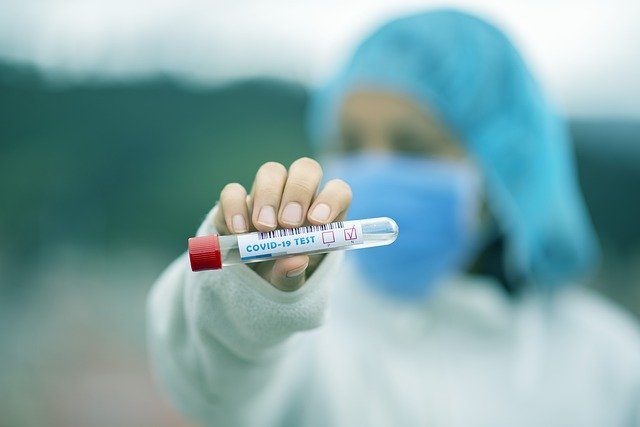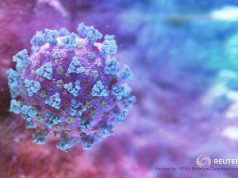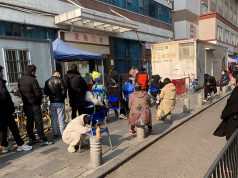Presidential spokesperson Harry Roque‘s claim that the country reached a 30,000 per day testing capacity is merely theoretically, local scientists said, calling the figure “misleading.”
In his virtual press briefing on Monday, Roque claimed that the country managed to reach and went over the target testing capacity on May 20 with 32,100 tests per day. The target number was 30,000 tests per day by the end of May.
“Isa pa pong mabuting balita, naabot na po natin ang ating target na 30,000 PCR tests per day. Ang original target po ay 30,000 by May 30. Pero noong Mayo 20 po ay nakaabot na po tayo sa 32,100 test per day, nalampasan po natin ang ating target. Anim na beses na po ang inilaki ng ating testing capacity (PCR) mula 5,000 noong April 15 sa loob lamang ng isang buwan,” Roque said.
Roque also claimed that the country has increased the total number of accredited COVID-19 laboratories to 66, an apparent expansion from only five facilities last March 19.
The national government has been updating the public on how it is ramping up its COVID-19 testing protocols since the spike in the number of cases and the public clamor for it last March or when the quarantine measures were first imposed.
What local scientists say
A coalition of local scientists called Scientists Unite against COVID-19 or TestCOVID-19 contradicted Roque’s claims and argued that the testing capacity he mentioned is not the actual number of tests conducted per day, according to data from the Department of Health.
The group shared on social media a side-by-side graphic of Roque’s statement and the clarification from Health Undersecretary Maria Rosario Vergeire that the DOH can only perform an average of 8,179 tests per day.
Vergeire made this clarification during an interview with ANC on Tuesday.
“We are averaging about 8,500 to 9,500 (actual) tests [per day] for the past week… because of the different laboratories experiencing operational issues,” said Vergeire.
The TestCOVID-19 coalition said that Roque was therefore misleading the public during the virtual presser.
“’Testing capacity’ as used by spokesperson Roque is the theoretical maximum tests per day that can be done by the testing labs altogether. However, this can be misleading because it’s only the theoretical maximum, not the actual tests done per day,” its post said on May 25.
HAVE WE REALLY REACHED OUR TARGET TESTING CAPACITY? pic.twitter.com/EC60KcGyak
— Scientists Unite Against COVID-19 (@TestCOVID19PH) May 25, 2020
Data analyst Edson Guido likewise questioned Roque’s use of “testing capacity,” if he was referring to the actual number of individuals tested or the number of tests that can be conducted.
Guido also retweeted a graph of the number of tests being conducted daily.
“When we say 30k is the target by end of May, do we refer to unique individuals tested or number or tests or testing capacity? And if testing capacity is 30k, then why are we only testing less than 12k? Because it’s clear then that resources are not maximized,” he said on Twitter.
Here's the thing. When we say 30k is the target by end of May, do we refer to unique individuals tested or number or tests or testing capacity? And if testing capacity is 30k, then why are we only testing less than 12k? Because it's clear then that resources are not maximized.. https://t.co/d2EOvELD2v
— Edson (@EdsonCGuido) May 25, 2020
More discrepancies in data presentation
Vergeire in the television interview specified that the 32,100 figure that Roque mentioned was based on estimates in the current number of human resources and equipment they have.
She also said that the current number of licensed laboratories is 42, contrary to the 66 number that Roque said.
“Currently, we have 42 licensed laboratories. And based on the estimates that we do, based on the number of their machines, the number of health human resources that they have, and the hours for their operations, we have estimated this capacity of 32,000 for all of these 42 laboratories,” Vergeire said.
Monitoring from independent COVID-19 trackers also similarly showed that the country has yet to meet the target testing capacity.
Date from the online tracker covid19stats.ph showed that the country conducts an average of 7,797 tests daily for the past 7 days.
The data came from the DOH Data Drop, the JHU Coronavirus Resource Center for Global Data and the 2015 census for the population.
Meanwhile, the tracker called endcov.ph, which is handled by the University of the Philippines and reflects the same figures from the DOH’s official tracker, monitored a total of 289,732 tests in unique individuals tested and a total of 315,363 samples tested.
‘Issues in the health care system’
Vergeire bared that operational issues, lack of supplies and human resources hamper the laboratories’ testing activities.
This was echoed by the TestCOVID-19 group, wherein they enumerated factors why only 25% of tests are carried out:
- Lack of personnel
- Lack of supplies/consumables
- Uneven sample allocation
Moreover, the DOH spokesperson also disclosed that the “issues” of the health care system also deter their contact tracing process.
“There are really issues in our health system, especially with regard to the identification of people who can do contact-tracing,” she said.










